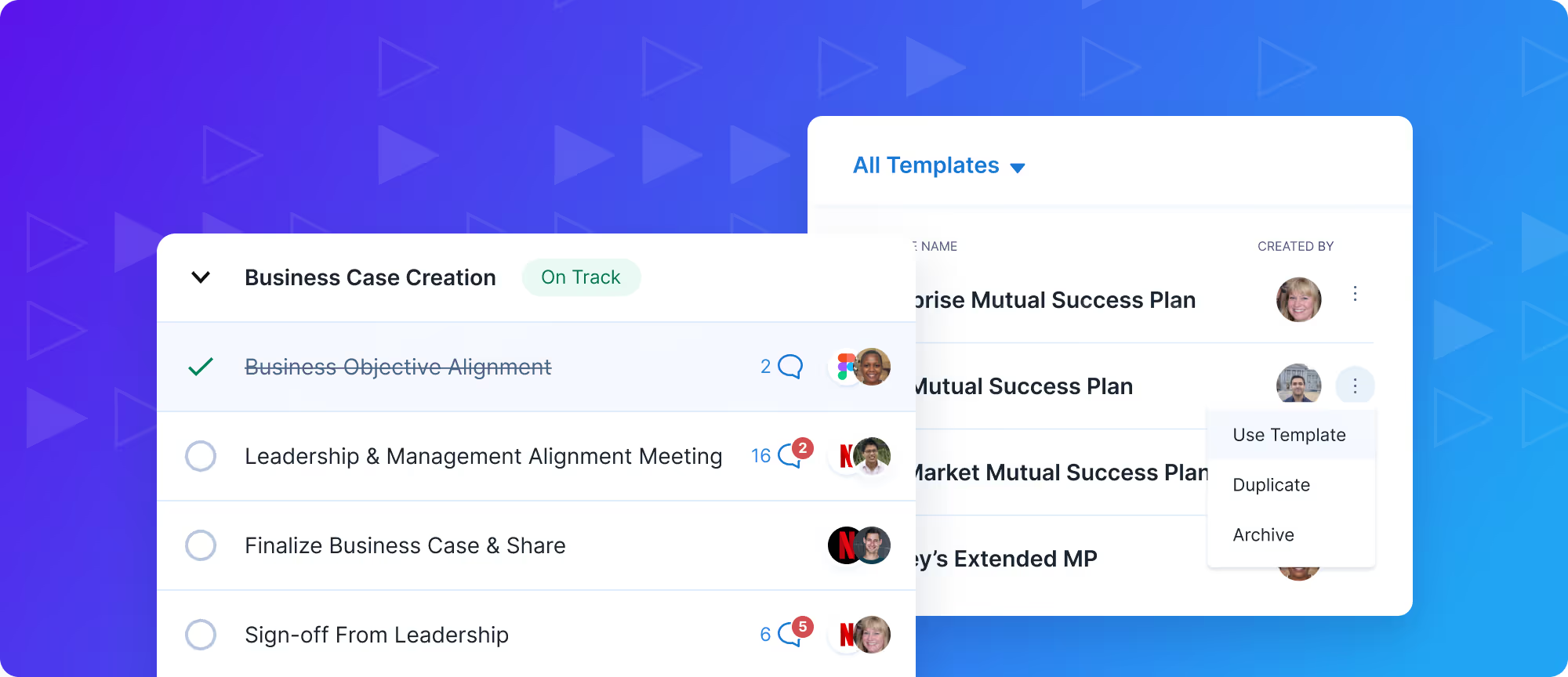In this post, we’ll dive into some tactics and best practices for using MAPs with your buyers in your B2B sales process – with the help of 30 Minutes to President’s Club hosts Nick Cegelski and Armand Farrokh!

If your sales process involves more than a one-call close, chances are you need a Mutual Action Plan to align everyone on the buying team and keep your deals on track.
A Mutual Action Plan (MAP) is a collaborative plan (usually created in a shared doc, sheet, or dedicated software like Accord) that outlines how buyers and sellers will work together during the buying or onboarding process.
In this post, we’ll dive into some tactics and best practices for using MAPs with your buyers in your B2B sales process – with the help of 30 Minutes to President’s Club hosts Nick Cegelski and Armand Farrokh!
Jump in below to learn the what, when, why, and how of MAPs, and check out 30MPC’s MAP template & video guide for more resources.
MAPs align both parties around the business objectives, key steps, timeline, and the stakeholders who need to be involved.
Buying software in the B2B world is hard. MAPs help make it easier for your buyer (and yourself!) by clearly laying out the path to buy and showing what needs to happen, at what time, and with whom, to meet the buyer’s goals and timeline.
“Using a Mutual Action Plan signals that you actually know what you’re doing, and you can build massive trust with your buyer.” -Nick Cegelski
MAPs also help keep both sides accountable to the deliverables and timeline – when you collaborate on a MAP with your buyer and they give you the thumbs up on it, they’re agreeing to all the key steps of what it takes to evaluate and buy your solution.
All of this facilitates clear, open, and honest communication between you and your buyer. The entire process is transparent, you both know what needs to happen, and you can have better conversations and build a stronger partnership.
First, outline the major stages in your sales cycle. For a classic mid-market sales cycle, this might include things like:
Once you have the big stages, break them down into smaller steps that you can assign due dates and owners to. Finally, consider things like buyer FAQs or resources you typically share (like case studies or security docs) and link to them in your plan so everything is in one place.
Don’t forget about the “mutual” in Mutual Action Plan! It’s not just about getting the deal done, it’s about solving your buyer’s problem and getting them to their “dream state.” Don’t let your MAP be rigid; leave room for flexibility so you can adjust it to your buyer’s needs.
Check out our masterclass with 30MPC's Nick Cegelski on how to win more deals by helping your buyers buy!
Don’t send your MAP via email with no context. It’s best to walk through it together on a live call with your buyer, so you can explain it to them, they can give you feedback, and you can start collaborating on it right away.
Typically, you want to introduce the MAP when you have a champion who’s bought in to your solution and wants to move forward, but you know there are multiple steps to go through before they can buy. Timing will vary based on your specific sales process, but this might be after the first or second call.
“Too many people introduce Mutual Action Plans too late in the buying process. Introduce them early before the deal has the chance to go off the rails.” -Armand Farrokh
You can introduce it by saying something like:
“These are the typical steps we see our customers go through, and these are the people who might need to be involved. Can you give me a sense of if we’re aligned here, or how you’d go about making a purchase decision?”
Remember, your MAP isn’t meant to be rigid; it’s meant to open things up – every buying company is different! Make sure you’re getting your buyer’s input on the process and adding or removing steps as needed when walking through it together.
After you introduce the MAP, don’t leave it forgotten and never referenced again. You should weave it into the rest of your sales process and refer to it at every chance you get.
In every customer call, pull up the MAP to review the progress you’ve made, status of key steps, any blockers or questions, etc. and make any changes needed.
If your buyer emails you asking for a specific resource, send it to them and also share the link to that resource within your MAP, so they can see that everything is organized in one place. This also enables them to easily share everything they need with their internal team, since it’s all in your MAP.
At the end of the buying process, you’d ideally hand off to your implementation or CS team, and start a new MAP with everything your new customer needs to launch successfully!
Mutual Action Plans are necessary for keeping timelines on track, increasing deal velocity & win rates, and building stronger partnerships by making it as easy as possible for your buyers to work with you.
We've made it easy for you to get started with MAPs today – get a free MAP template & video walkthrough from the folks at 30 Minutes to President’s Club!